Rome’s ancient harbor city – Ostia Antica
During my stay in Rome, I decided to escape the hustle and bustle of the Eternal city and go somewhere else to explore. Thus, I searched for some time for interesting places to visit and I found Ostia Antica, which looked like one of those ancient cities that are so well-preserved that you can almost live in them. That is why I made the decision to go there and spend half a day roaming around the remains of this ancient town that once was the main port providing resources for the city of Rome.
While travelling on the train I started reading about the city and found out that Ostia Antica is one of the most important archaeological sites near Rome. It was considered to be the city that was supporting with resources and protecting Rome from various attackers oversea. According to the story, Ancus Marcius, the fourth king of Rome established the city around the fourth century before the birth of Christ, so he can easily extract salt from the Tyrrhenian Sea. However, there is also evidence that people were living there earlier than that and that there was a military camp, which was built to protect the people living there and also the coast.
Later in time, with the development of the Roman Empire, Ostia Antica became the most important harbour for Rome, as it was controlling most of the Mediterranean marine routes. The city of Ostia Antica became such an important part of Rome, that around the second century after the birth of Christ, during the ruling of Trajan, lots of buildings were renovated or built. Among them was the Forum of the city, public baths, storehouses, residential buildings where people were living in single room apartments and a temple. However, around the third century, the city was left by its population, due to the spread of malaria and it went into despair.
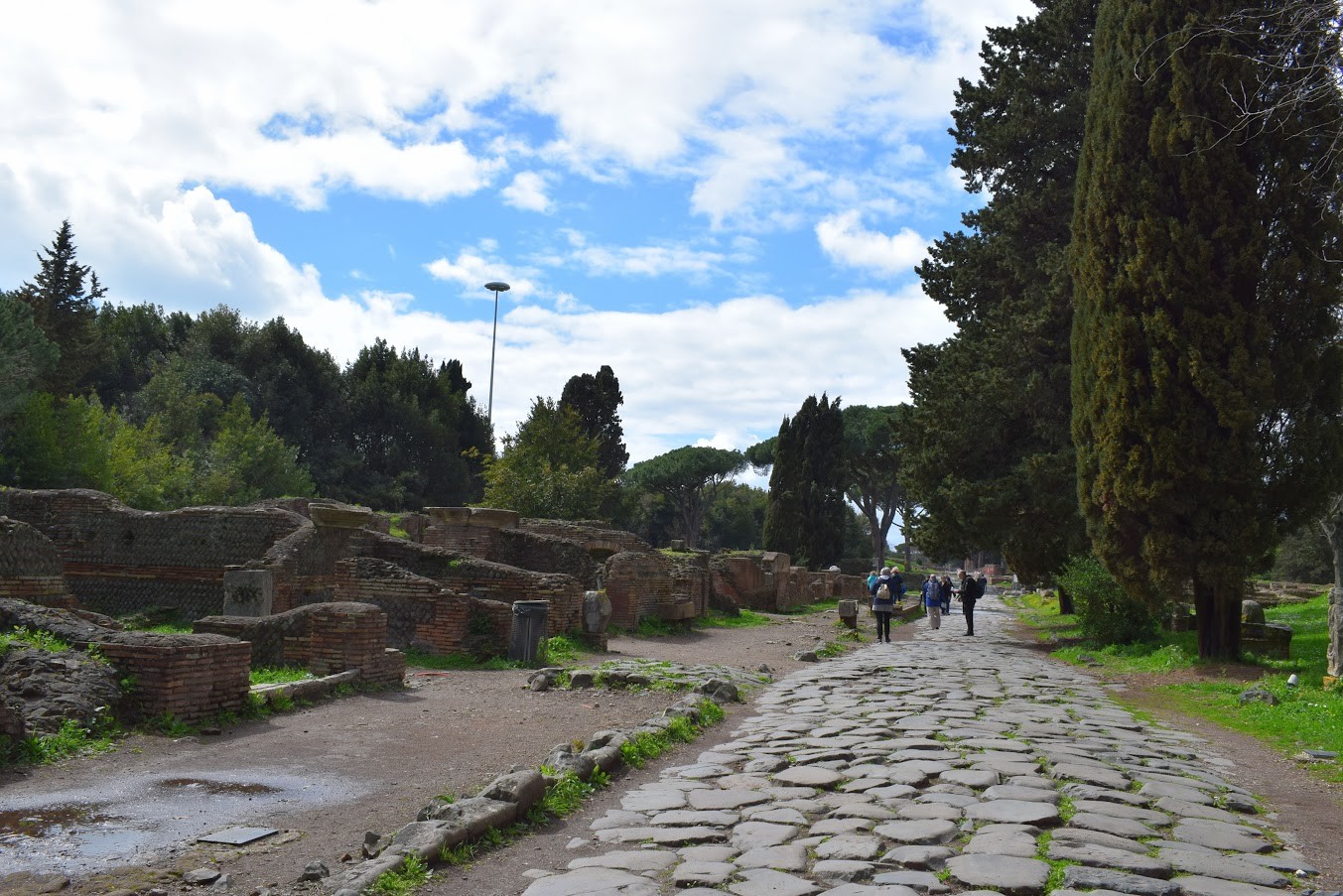
How to go to Ostia Antica?
The easiest and cheapest way to go to Ostia Antica is to catch the metro to Roma Porta Saint Paolo train station in Rome. Then, from there you can catch the train to Ostia Antica. The train ride to the ancient city takes around an hour and the price of the ticket is 1.50 euros each way. However, make sure that you take off at Ostia Antica train station, as the next one will lead you directly to the city of Ostia. Then, you just have to cross the bridge and the path will lead you to the entrance of the archaeological site of Ostia Antica.
The archaeological site of Ostia Antica
Once I reached the entrance of Ostia Antica I had to pay for the ticket at the cash office and it was four euros, whereas for people over 25 years old it is eight euros. And then, my journey to the ancient harbour city of Rome started. Honestly, from my first minutes spend there I could say that this place has not been affected so much by time or any natural events. It just stood there all these years and waited for people to see its glory.
The first thing that caught my attention was the well-preserved path that stood there since ancient times. This was also the path that ancient Romans were using to bring the goods and commodities to the city of Rome. It was also used by merchants, army and sailors to get fast to Rome. Around the road, there are many well-preserved columns and also statues of pagan gods and goddesses. Later, there appeared the houses of the citizens of Ostia Antica or what was left of them. A bit to the side and there were the tombs of the wealthy people that were engraved with lots of different gods or animals to protect the dead on their way.
Neptune’s baths
Going a bit further on the stone-paved road I found the Baths of Neptune or the Terme di Nettuno, as it is written on the sign before you enter them. I walked inside the baths that were quite big and spacious and in some places there were visible remains of black and white mosaics. However, to better observe the baths of Neptune I climbed the stairs so I could better see all of them and also the famous black and white mosaics of Neptune and his wife Amphitritethat was covering a whole room. The mosaics were very well-preserved and I saw the whole scene of it and how Neptune was surrounded by all kinds of marine creatures as dolphins and the typical mythical tritons and sea monsters.

The houses of the firemen
Then, I continued straight and ended at the houses of the firemen or where the ancient firemen were staying and making sure that there are no fires, as the people were using lots of torches and oil lamps at that time. In case a fire would spread, the firemen or vigiles, as they were called, would start putting out the fire by using buckets full of water and that way would prevent it from spreading. The place they were residing now looked more like a destroyed residential area with lots of mini houses.
The theatre of Ostia Antica
Ostia Antica didn't have an amphitheater, but theatre instead. Most people don't distinguish between the two, but there is a huge difference between them. The amphitheatres during the Roman times were built in oval-shaped forms and were open spaces where lots of gladiator battles were fought and lots of chariot races were held. On the other hand, the theatres in Roman times were mainly used for holding a speech, re-creating mini sea battles or for recitals. The theatres were also semi-circular and not closed as the amphitheatres.

Thus, once I ended my exploration of the baths of Neptune and the barracks of the firemen I continued to the famous theatre of Ostia Antica. The theatre is quite well-preserved and it has a small area where people can hold a speech. At the beginning of the theatre, some of the original marble stairs and seats are kept and displayed. There are a couple of ways to go on its top and sit to listen to the speeches of people or overlook at the square of the Guilds. There is a main entrance to the theatre to reach the lower levels or it is also possible to go around both of its sides and use the stairs. At this time, there was a huge group of tourists with their knowledgeable guide explaining everything about the ancient city and the theatre.
The theatre was built a century before the birth of Christ by one of the most famous Roman architects - Agrippa. However, with time the wall of the theatre near the stage has been destroyed and now only a small part of it can be seen. According to the history and the evidence gathered the theatre was able to gather up to four thousand people. Furthermore, archaeologists found that the theatre was used mainly for re-creating naval battles or re-creating stories with marine gods and goddesses of the seas.
The square of the Guilds

The square of the Guilds can be overlooked by the theatre along with its mini forest surrounding it. In the middle of the square are the remains of a temple and next to it a lot of small rooms can be seen. These rooms were used by people to trade their goods and this can be seen by the mosaics that were displayed there. I saw that on most of them there were ships and traders along with sea animals and large clay vases represented, which as per archaeologists suggests for trade activity in the Mediterranean Sea. While walking there, I realized that Ostia Antica was not a regular Roman city, but it was one of the most important cities probably in the whole known world back then. It is very probable that the city was always full of foreign traders and merchants that wanted to do business with the Romans.
The Winebar
After my walk around the theatre, I decided to go to the famous wine bar in Ostia Antica. It resembled the bars of our time as it had a counter where you can purchase food or drink to your liking. Near the bar, I saw a couple of shelves where probably the food or drinks were presented. Over it, there was a well-preserved painting that was showing what the bar offers and there were three drawings of food, a drink and musical instruments, which was suggesting that it offers live music. There was also a bench to the side where people could sit and enjoy their food or drink. The wine bar in Ostia Antica is quite a big building and spacious too and for that time that it operated it seems to be a quite popular and well-furnished place.
The temples of Ostia Antica
Once I went out of the bar, on the left side there was the Forum of the city, as well as a Roman temple of Jupiter, Minerva and Juno or as they are mostly known the Capitoline triad. Next to them, I also saw the remains of a little church and other destroyed temples that were not named.
A bit of walking up the street led me to the Tempio Rotondoor the Round temple of Ostia Antica. It is the last temple that was built in the city in the middle of the third century after the birth of Christ. The temple had a podium that could be reached by stairs and around it, there were some marble columns left. As per the archaeologists, the temple had lots of features that resembled that of the Pantheon in Rome, due to the opening of the centre of its dome and it was dedicated to ten or even more Roman gods and goddesses.

After that, I went a bit to the right on the road and ended at the temple of Cupid and Psyche, which could be easily recognized due to the statue of them kissing in the middle of a room. It was quite well-preserved as all its marble walls and floor were still there, although the statues were quite destroyed. On the side there was also the temple of Hercules, that was built around the first century before the birth of Christ. All the temples were surrounded by vast gardens and around them, there were still some columns remaining or statues that were semi-destroyed.
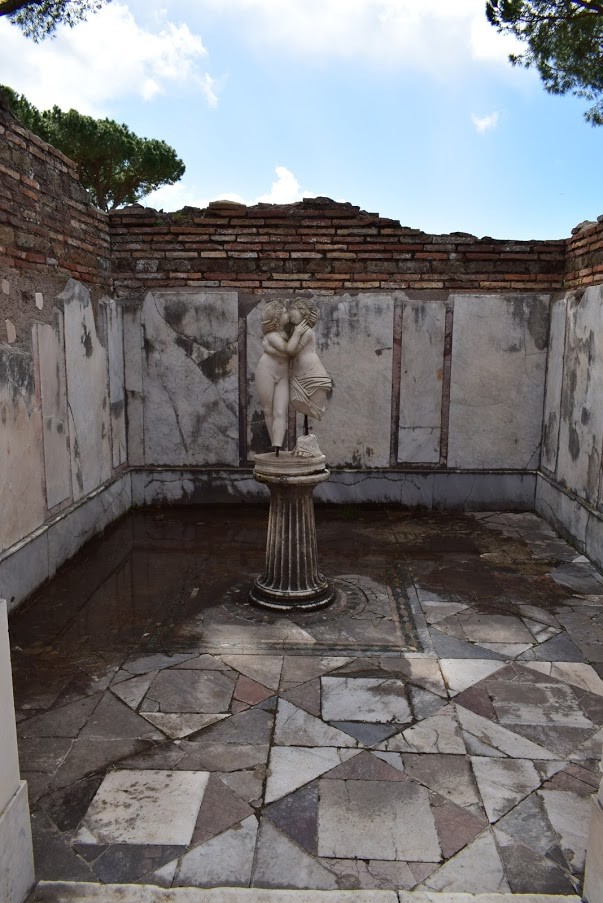
The baths of Mithras
Then, I walked a bit more on the stone-paved street and I reached the baths of Mithras. I found them by following the sign there, which led me to their entrance. They were very well-preserved unlike other parts of the site and I could even see the room for the waterwheel that was used to lift water into the baths, which was quite an achievement at this time. Inside the baths, there are also well-preserved mosaics, arches that are still standing and statues of Mithras.
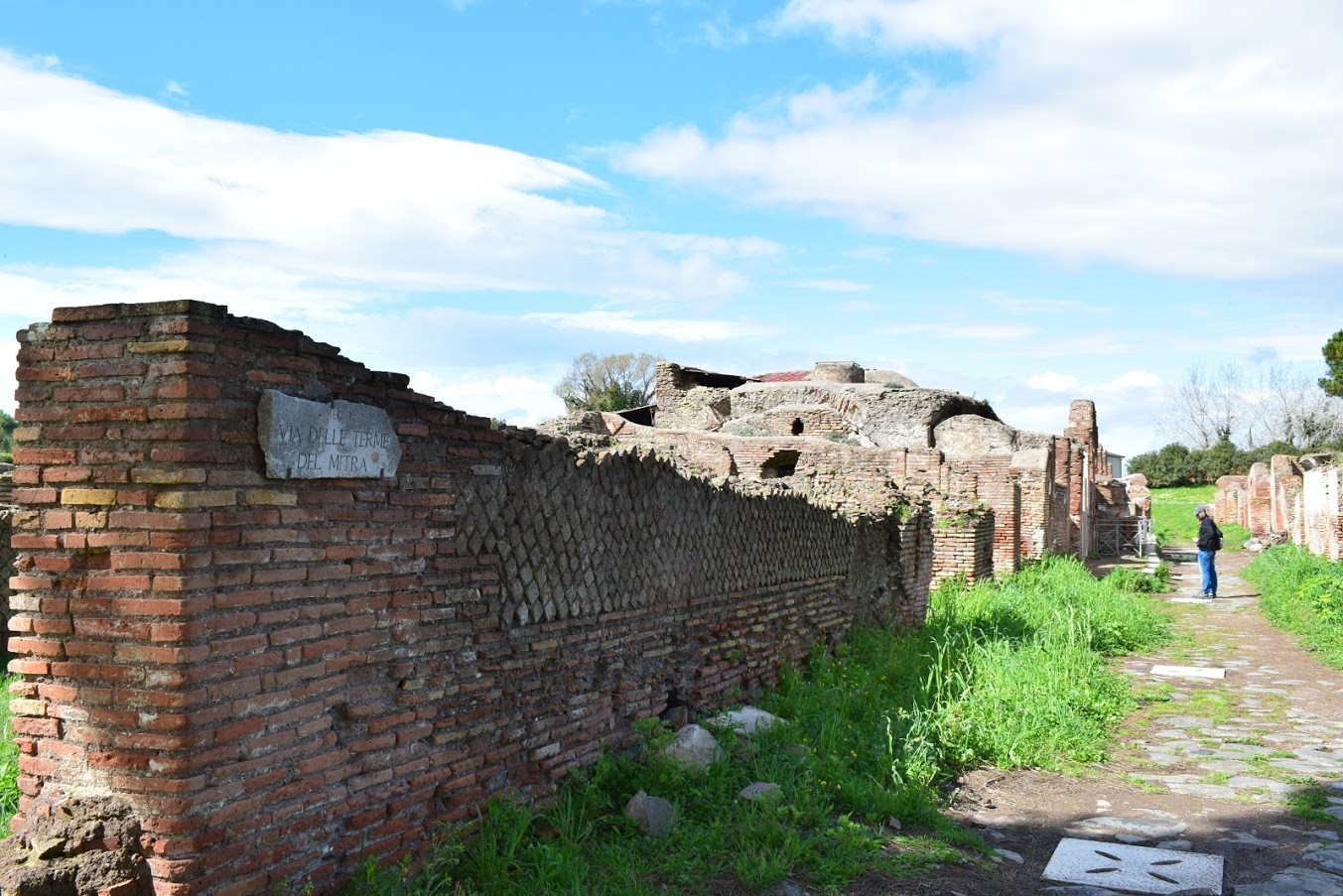
The house of Serapis
Exactly on the other side of the road is the house of Serapis, which is quite a big house with a couple of floors. On the first floor, there are places for the shops where people were trading commodities and also the big courtyard. On the second floor, I saw the apartments where the citizens of Ostia Antica were living. Most of them were single-room apartments.
Next to the apartments are the Baths of the Seven Sagesthat have a large round hall with the floor made out of black-and-white mosaics depicting different animals and hunting scenes with hunters.
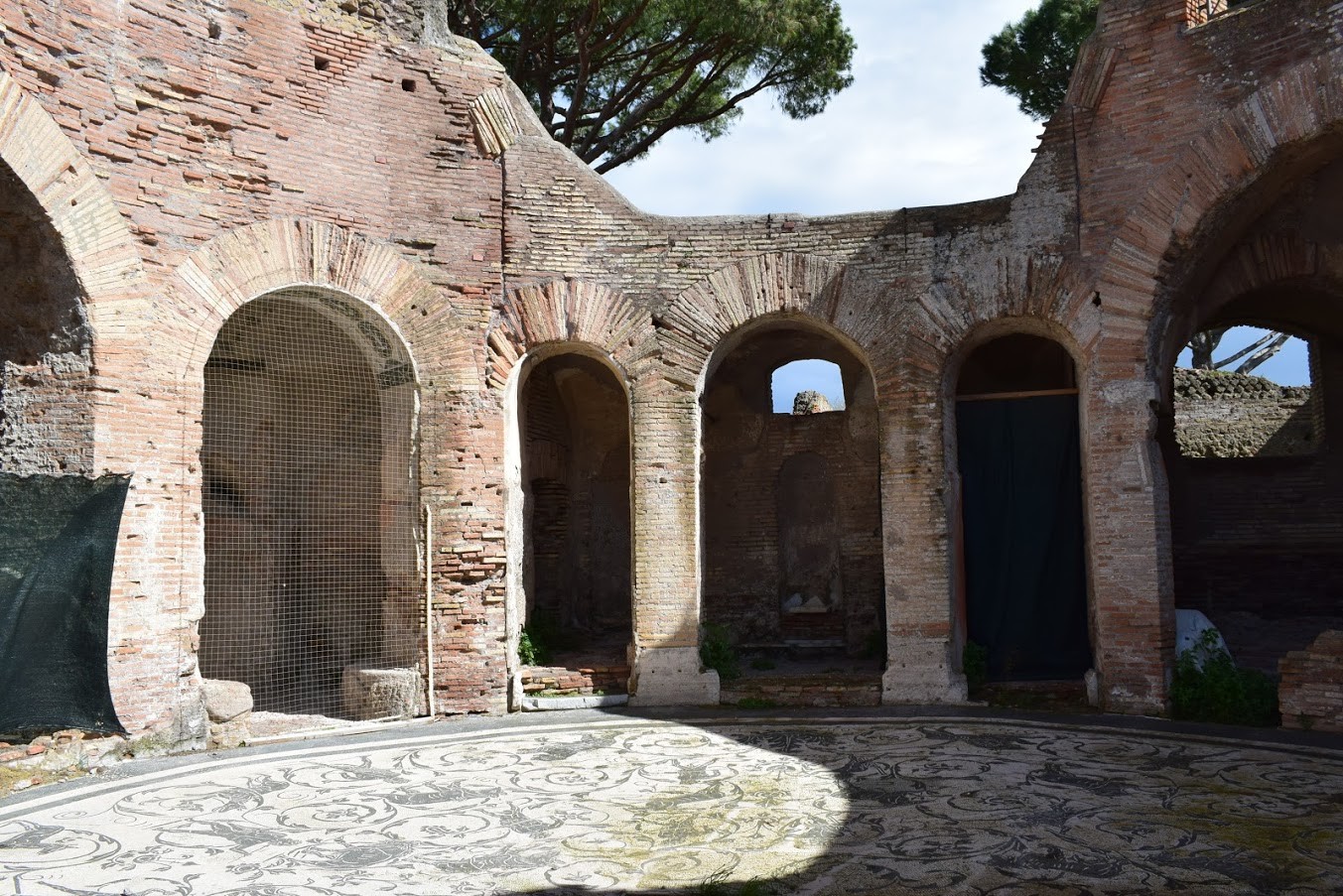
Around the baths, there were a couple of paintings showing famous charioteers and also drawings of the “wise Greek” people that lived there around the sixth century before Christ.
The Museum
Finally, I went to the museum, so I can take a look at the well-kept statues and artefacts found in the ancient city of Ostia Antica. Near the entrance of the museum, there was a small beautiful garden where some of the artefacts were housed, as well as one sarcophagus made out of white marble.
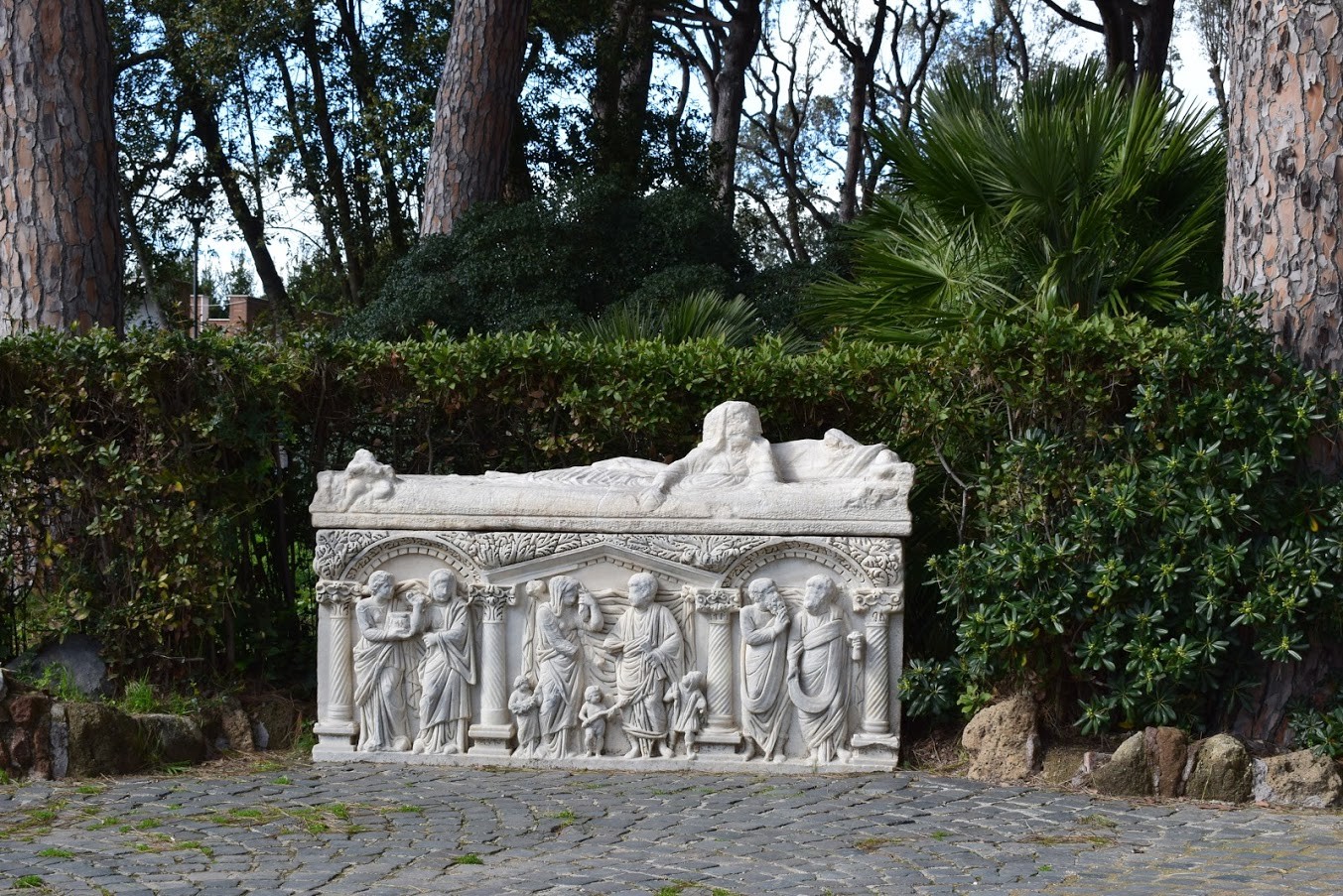
At the beginning of the museum, there were a couple of rooms with lots of statues that were kept inside, so they are not destroyed. Going further in the museum there were the statues of Minerva and Hercules from its temples and many other statues of gods and goddesses. In addition to that, the museum has a great collection of Roman portraits of the Emperors and the wives.
Overall, my experience in Ostia Antica was quite fantastic. I learned a lot about the way the ancient Roman people were living and what was important for them. Thus, I would recommend everybody that has the chance to visit this city to do it. It is quite amazing!
Photo gallery
Content available in other languages
Want to have your own Erasmus blog?
If you are experiencing living abroad, you're an avid traveller or want to promote the city where you live... create your own blog and share your adventures!
I want to create my Erasmus blog! →
























Comments (0 comments)